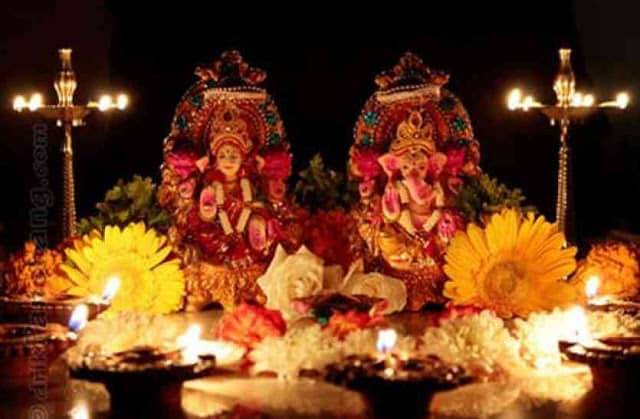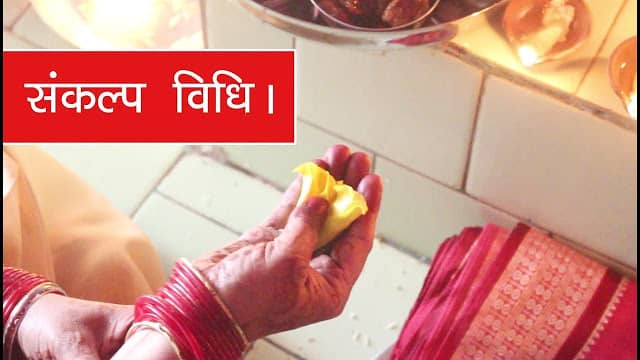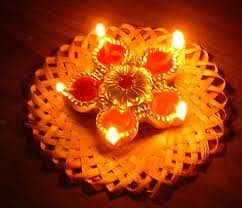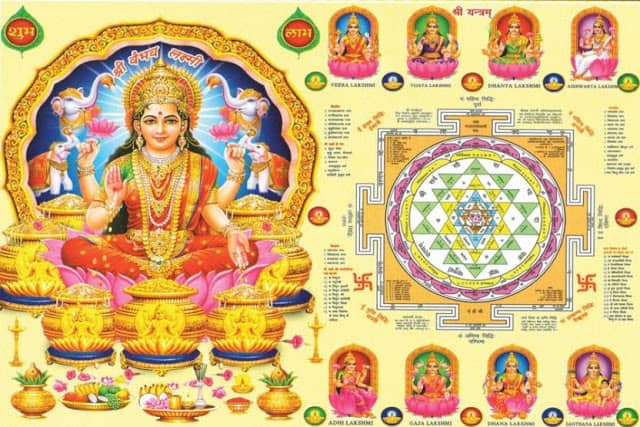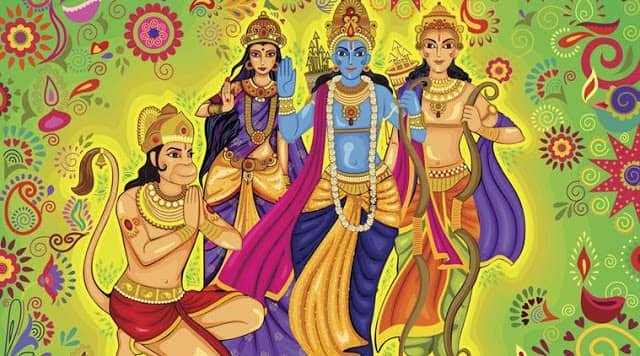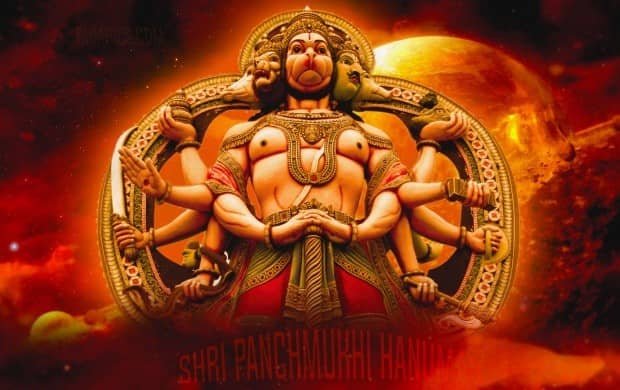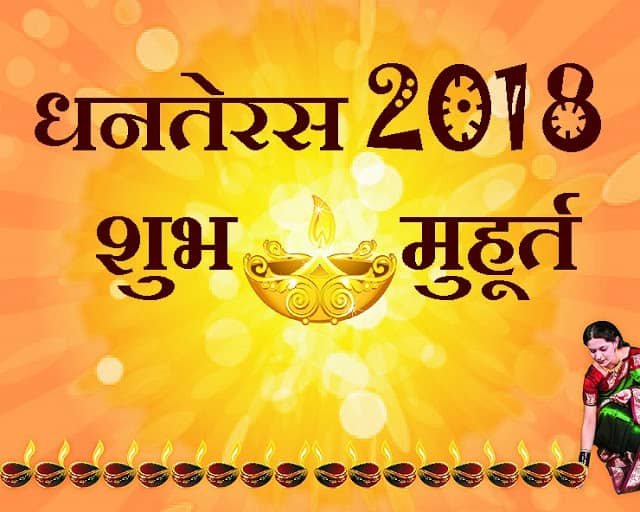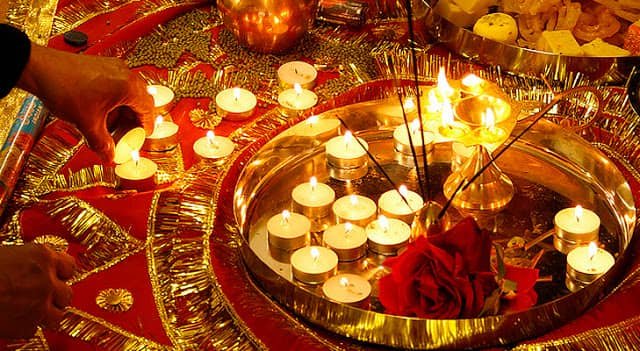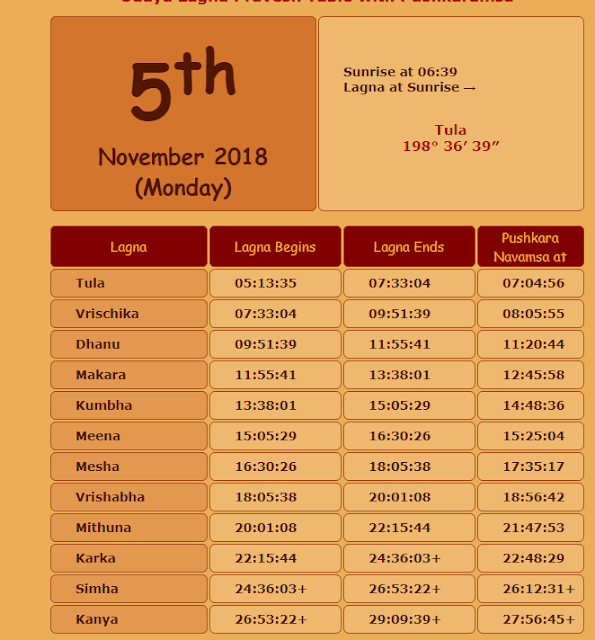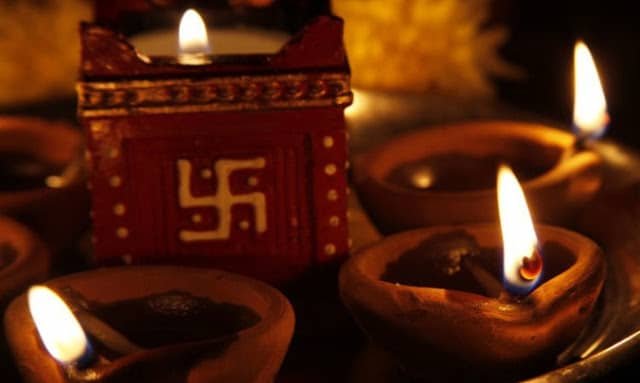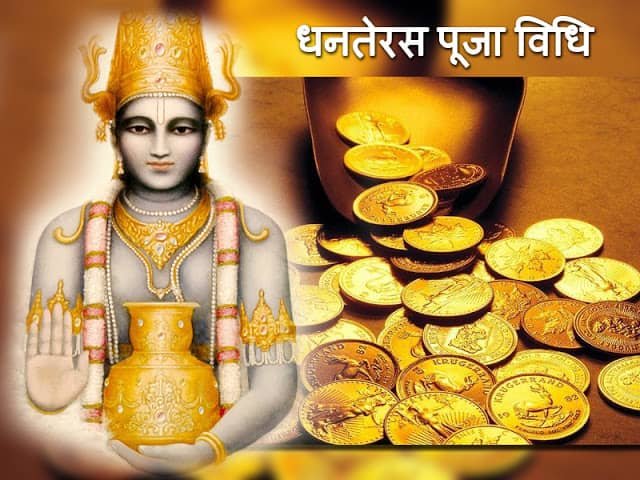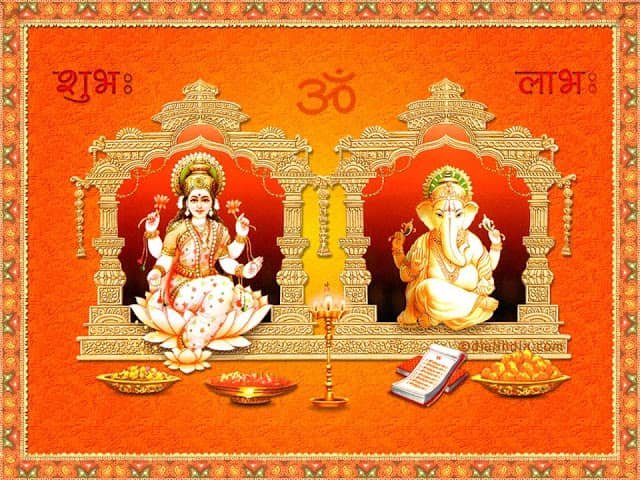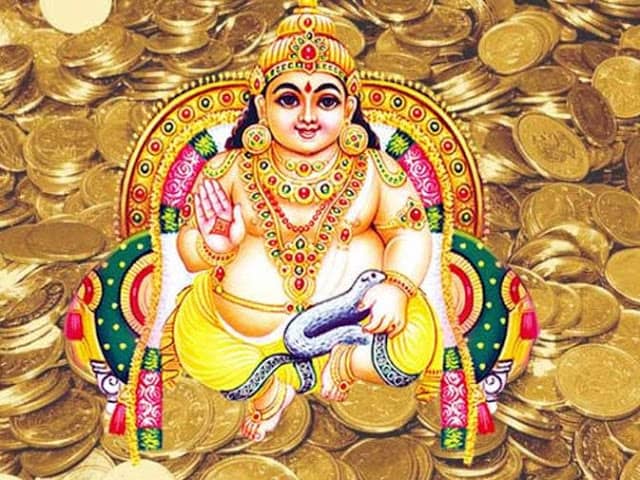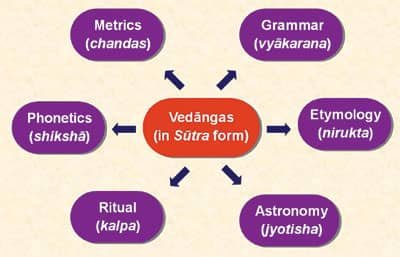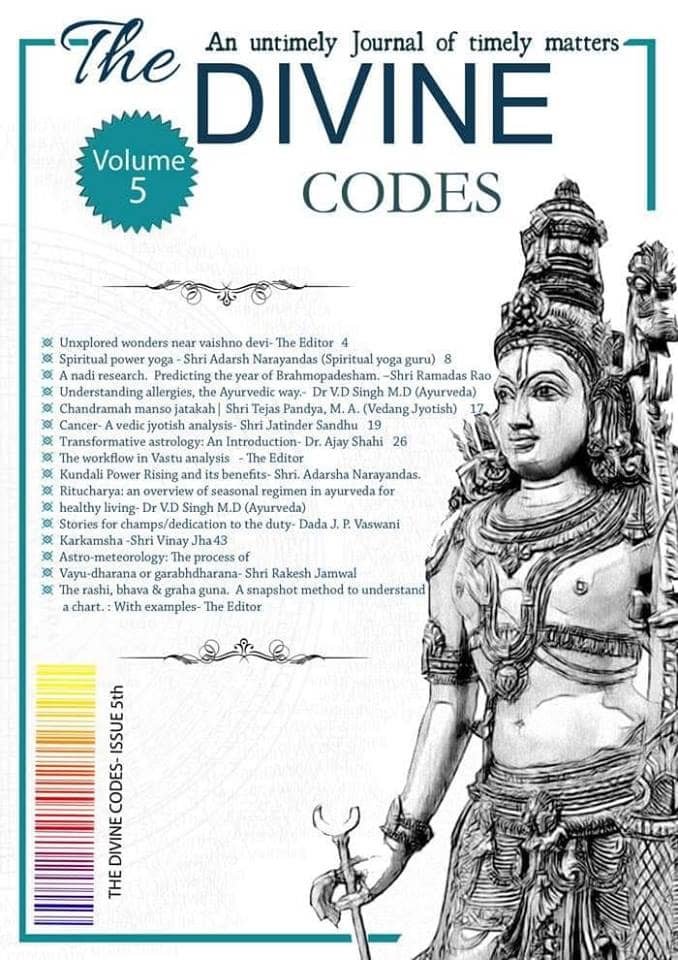Goddess Lakshmi is the Hindu Goddess of wealth. She is worshipped by all households devotes and is associated with the festival of Deepawali when people offer special prayers to her to invite her into their homes. Lakshmi Puja is performed for prosperity, material abundance, and spiritual prosperity. She is worshipped to remove troubles that prevent us from starting a spiritual path or business.
Lakshmi Pujan (Sanskrit: लक्ष्मी पूजा), celebrated on Amavasya (new moon day) of the Krishna Paksha (Dark fortnight) in the Vikram Samvat, month of Ashwin, on the third day of Tihar and is considered as the main festive day of Deepawali.
The most auspicious time for the puja is decided when “Amavasya tithi” prevails during “Pradosh Kaal” or the evening time. On this day, the sun enters its second course and passes the constellation Libra, which is represented by the balance or scale. Hence, the sign of Libra is believed to suggest the balancing and closing of account books.
This Year Deepawali Muhurata : 2018 Diwali Puja Muhurat :
(adsbygoogle = window.adsbygoogle || []).push({});
Delhi – 17:57 to 19:53
Noida – 17:57 to 19:52
Pune – 18:27 to 20:27
Jaipur – 18:06 to 20:02
Chennai – 18:10 to 20:07
Mumbai – 18:31 to 20:31
Kolkata – 17:23 to 19:21
Gurgaon – 17:58 to 19:54
Hyderabad – 18:11 to 20:11
Bengaluru – 18:21 to 20:17
Ahmedabad – 18:25 to 20:23
Chandigarh – 17:55 to 19:50
Pradosh Kaal Muhurat
Lakshmi Puja Muhurta = 17:57 to 19:53
Duration = 1 Hour 55 Mins
Pradosh Kaal = 17:27 to 20:06
Vrishabha Kaal = 17:57 to 19:53
Amavasya Tithi Begins = 22:27 on 6/Nov/2018
Amavasya Tithi Ends = 21:31 on 7/Nov/2018
Mahanishita Kaal Muhurat
Lakshmi Puja Muhurta = None
Duration = 0 Hours 0 Mins
Mahanishita Kaal = 23:38 to
24:31+
Simha Kaal =
24:28+ to
26:45+
Amavasya Tithi Begins = 22:27 on 6/Nov/2018
Amavasya Tithi Ends = 21:31 on 7/Nov/2018
Choghadiya Puja Muhurat
Auspicious Choghadiya Muhurat for Diwali Lakshmi Puja
Morning Muhurta (Labh, Amrit) = 06:41 – 09:23
Morning Muhurta (Shubh) = 10:44 – 12:05
Afternoon Muhurta (Char, Labh) = 14:46 – 17:28
Evening Muhurta (Shubh, Amrit, Char) = 19:07 – 21:31
Lakshmi Puja Muhurat
According to the Drikpanchang.com On Diwali, Lakshmi Puja should be done during Pradosh Kaal which starts after sunset and approximately lasts for 2 hours and 24 minutes. Some sources propose Mahanishita Kaal also to perform Lakshmi Puja. Mahanishita Kaal is best suited for Tantrik community and practising Pandits who know the best about Lakshmi Puja during this special time. For common people, one should do Pooja in Pradosh Kaal Muhurat.
According to many legends, Lakshmi, the goddess of wealth and Lord Vishnu’s wife, visits her devotees in the Deepawali night and bestows blessings upon each of them and it is believed that Mata Laxmi roams around on the earth on Diwali night during Vrishbha and Simha Lagna.
Step 1: Precheck for Deepawali Pooja
To welcome the Goddess, devotees must follow below-mentioned pre-requests before going to Perform Deepawali Pooja :
1) Perform Cleanliness in every corner of the home: Devotees must maintain cleanliness in the Deepawali.
2) Maintain Peace and harmony: Maa Lakshmi likes peace and harmony, So try to prevent disputes between family members. Make a loving and peaceful environment at home.
3) Give Respect to every woman at your home: Never show disrespect towards your wife and Mother, she is Grih Lakshmiji (Lakshmi of Home). If she would be happy, Dhan Lakshmiji (Goddess of Money) will be happy.
4) Wake up early in Deepwali: Get up early in the morning.
5) Offer Bhog to your Temple Ishta Dev/ Devi: Take food only after bathing and worshipping in the morning. Offer food to agni dev or keep bhog for God.
6) Respect your elders: Give respect to your elder, your parents and have faith in God.
7) Perform Family Prayer: Perform morning and evening prayer or aarti with your family every day, even in Deepawali day too. This makes Goddess Lakshmi always happy.
It is believed that goddess Lakshmi likes cleanliness and visit the cleanest house first. Hence, the worshipping is done with offerings of haldi (turmeric) and sindoor(vermilion) on this day. Usually, Lakshmi Puja consists of a combined puja of five deities:
1. Ganesha is worshipped at the beginning of every auspicious act as Vighneshvara.
2. Goddess Lakshmi is worshipped in her three forms; Mahalakshmi the goddess of wealth and money, Mahasaraswati the goddess of books and learning, and Mahakali.
3. Later, Lord Kubera, the treasurer of the gods is also worshipped during Deepawali.
Step -2 How to Perform Lakshmi Pooja on Diwali

(adsbygoogle = window.adsbygoogle || []).push({});
1) Purify your house in the morning. Clean your every corner of the house properly. Sprinkle Gangajal or water from Ganga river to purify the surrounding in the morning.
2) Set up the platform in your pooja room in a choke Made of mango trees. Spread the red cloth on a wooden choke and keep a handful of grains centre.3) Place the kalash in the middle. Fill it with 75% of water and put one supari, one marigold flower, a coin and some rice grains. Put 5 mango leaves in the kalash and arrange them in a circular design on the neck of the kalash.
4) Place Goddess Lakshmi. Keep a small Puja thali on the kalash and make a small flat mountain of rice grains. Draw a lotus with haldi over it and place the idol or Goddess Lakshmi in the center. Place some coins in front of it.
5) Place Lord Ganesha’s idol. Lord Ganesha is given first importance in every puja. Therefore, on the right side (South-West direction) of the kalash, place the idol of Ganesha. Apply a tilak of haldi and kumkum. Put some rice grains on the idol. Light a Diya with Ganapati Puja Oil and White Madar Wick to get the blessings of Lord Ganesha
6) Place wealth related items near the Pooja place of Mata Laxmi. Now place some books or anything related to your business or wealth besides the arrangement.
7) Light diyas all around your House. Place and Light a panch mukhi diya (oil lamp with 5 wicks) with Lakshmi Puja Oil along with Lakshmi Grace Wick and place it in a thali along with some haldi, kumkum and rice grains. (sandalwood paste, saffron paste, abeer and gulal are optional)
Step – 3: Beginning of the Deepawali Pooja in Pradosh Kaal: Rituals or Procedures to be Followed
The individual performing the worship should apply Kumkum on his forehead.
1) Purifying your Self via following Mantras:
Performming Aachman, Nyasa, Pranayam, Sankalp, Ghanta Naad.
Achaman (Sipping water from the cupped palm thrice while uttering the three Names of Shrivishnu and releasing the water into the plate from the palm while uttering the fourth Name.)
While uttering the three Names, drink the water from the right hand which is taken by the spoon with the left hand.
श्री केशवाय नमः । श्री नारायणाय नमः । श्री माधवाय नमः ।
‘Shri Keshvaya Namaha |’, ‘Shri Narayanaya Namaha |’, ‘Shri ‘Madhavaya Namaha
|’‘श्री गोविन्दाय नमः ।’
Then say ‘Shri Govinday namaha |’ and release the water from the hand into the plate.
Thereafter, utter the names given ahead –
श्री विष्णवे नमः । श्री मधुसूदनाय नमः । श्री त्रिविक्रमाय नमः । श्री वामनाय नमः । श्री श्रीधराय नमः । श्री हृषीकेशाय नमः । श्री पद्मनाभाय नमः । श्री दामोदराय नमः । श्री संकर्षणाय नमः । श्री वासुदेवाय नमः । श्री प्रद्युम्नाय नमः । श्री अनिरुद्धाय नमः । श्री पुरुषोत्तमाय नमः । श्री अधोक्षजाय नमः । श्री नारसिंहाय नमः । श्री अच्युताय नमः । श्री जनार्दनाय नमः । श्री उपेन्द्राय नमः । श्री हरये नमः । श्री श्रीकृष्णाय नमः ।
Shri Vishnave Namaha |, Shri Madhusudanay Namaha |, Shri Trivikramay Namaha |. Shri Vamanay Namaha |, Shri Shridharay Namaha |, Shri Rushikeshay Namaha |, Shri Padmanabhay Namaha |, Shri Damodaray Namaha |, Shri Sankarshnay Namaha |, Shri Vasudevay Namaha |, Shri Pradyumnay Namaha |, Shri Aniruddhay Namaha |, Shri Purshottamay Namaha |, Shri Adhokshajay Namaha |, Shri Narsihimay Namaha |, Shri Achutay Namaha |, Shri Janardhanay Namaha |, Shri Upendray Namaha |, Shri Haraye Namaha |, Shri Krishnay Namaha |
Achman may be done the same way again. This has to be done twice before and after the ritualistic worship.
श्रीमन्महागणाधिपतये नमः । इष्टदेवताभ्यो नमः । कुलदेवताभ्यो नमः । ग्रामदेवताभ्यो नमः । स्थानदेवताभ्यो नमः । वास्तुदेवताभ्यो नमः । आदित्यादिनवग्रहदेवताभ्यो नमः । सर्वेभ्यो देवेभ्यो नमः । सर्वेभ्यो ब्राह्मणेभ्यो नमो नमः । अविघ्नमस्तु ।
Shri Manmahaganadhipataye Namaha |, Ishtadevatabhyo Namaha |, Kuldevatabhyo Namaha |,Gramdevatabhyo Namaha |, Sthan devatabhyo Namaha |, Vastudevatabhyo Namaha |, Adityadinavagrahadevatabhyo Namaha |, Sarvabhyo Devebhyo Namaha | Sarvebhyo Brahmanebhyo namo Namaha |, Avighnamastu |
Sankalp:

Saying of the Desh-Kala (country and the time)
The worshipper should apply some water to both the eyes and say the Deshkal as given ahead.
श्रीमद्भगवतो महापुरुषस्य विष्णोराज्ञया प्रवर्तमानस्य अद्य ब्रह्मणो द्वितीये परार्धे विष्णुपदे श्रीश्वेत-वाराहकल्पे वैवस्वत मन्वंतरे अष्टाविंशतितमे युगे युगचतुष्के कलियुगे कलि प्रथम चरणे जंबुद्वीपे भरतवर्षे भरतखंडे दक्षिणापथे रामक्षेत्रे बौद्धावतारे दंडकारण्ये देशे गोदावर्याः दक्षिणतीरे शालिवाहन शके अस्मिन्वर्तमाने व्यावहारिके विलम्बी नाम संवत्सरे, दक्षिणायने, शरदऋतौ, आश्विनमासे, कृष्णपक्षे, अमावास्यायांतिथौ, सौम्य वासरे, स्वाती (सायं ७:३० नंतर विशाखा) दिवस नक्षत्रे, सौभाग्य योगे, नागव करणे, तुला स्थिते वर्तमाने श्रीचंद्रे, तुला स्थिते वर्तमाने श्रीसूर्ये, वृश्चिक स्थिते वर्तमाने श्रीदेवगुरौ, धनु स्थिते वर्तमाने श्रीशनैश्चरौ, शेषेषु सर्वग्रहेषु यथायथं राशिस्थानानि स्थितेषु, एवंग्र्रहगुणविशेषेणाविशिष्टायां शुभपुण्यतिथौ.
(On the auspicious tithi of Amavasya (Note ) in the month of Ashwin in Sharad season in Dakshinayan in the year called Hemalambi in the present Shalivahan era in the country called Aryavarta (Note 1) (In the Ramkshetra in Bouddha Incarnation on the southern bank of River Godavari in Dandakaranya country in Bharat continent of Bharatvarsha in Jambudweep) in the first phase of Kaliyug of the four yugas from the twenty-eithth yuga in the Vaivaswat Manwantar in Shrishwet-Varaha Kalpa in Vishnupada of Brahmadeva’s second Parardha which is inspired by the Supreme God Bhagawan Shrivishnu)
Note 1 – Here Deshkal is in reference to the whole of Bharat and so it is mentioned as ‘Aryavartdesh’ In this manner, the name of the country is to be mentioned and the deshkal be mentioned accordingly
or
Those who find the above Deshkal difficult can say the Shlok given ahead and say they make a Sankalpa :
तिथिर्विष्णुस्तथा वारं नक्षत्रं विष्णुरेव च । योगश्च करणं चैव सर्वं विष्णुमयं जगत् ।।
or
Take some Akshata (Unbroken rice grains) in your right hand and make the resolve.
मम आत्मनः परमेश्वर-आज्ञारूप-सकलशास्त्र-श्रुतिस्मृतिपुराणोक्त-फलप्राप्तिद्वारा श्रीपरमेश्वरप्रीत्यर्थं श्रीमहालक्ष्मीप्रीतिद्वारा अलक्ष्मीपरिहारपूर्वकं विपुलश्रीप्राप्ति-सन्मंगल-महैश्वर्य-कुलाभ्युदय-सुखसमृद्ध्यादि-कल्पोक्त-फलसिद्ध्यर्थं लक्ष्मीपूजनं कुबेरपूजनं च करिष्ये । तत्रादौ निर्विघ्नतासिद्ध्यर्थं महागणपतिपूजनं करिष्ये । शरीरशुद्ध्यर्थं विष्णुस्मरणं करिष्ये । कलशशंखघंटादीपपूजनं करिष्ये ।
Meaning:
I am performing this ritualistic worship of Lakshmi and Deity Kuber for various benefits like the removal of my/our poverty and acquisition of more wealth, auspicious opulence, the growth of dynasty, pleasure and prosperity by the love of Shri Mahalakshmi.
Nyasa of Goddess Laxmi
Ganapathi Pooja
(adsbygoogle = window.adsbygoogle || []).push({});
or
Ritualistic worship of Shri Ganapati
Take some rice grains in a plate or a wooden board. Keep betel leaf and coconut on it. The tuft of the coconut must face the worshipper. Keep the stem of the leaf towards the Deity and the other end towards the worshipper. Say the mantra given ahead and perform worship.
वक्रतुण्ड महाकाय कोटिसूर्यसमप्रभ । निर्विघ्नं कुरु मे देव सर्वकार्येषु सर्वदा ।।
Meaning: Oh Ganesh, you are the one with the curved trunk, huge body, a Deity who has the light equal to that of crores of suns, help me do all my jobs always without any obstacles.
ऋद्धिबुद्धिशक्तिसहितमहागणपतये नमो नमः ।
Meaning: With Rrdhi, intellect and Shakti I pay obeisance to Mahaganapati.
महागणपतिं साङ्गं सपरिवारं सायुधं सशक्तिकम् आवाहयामि ।
Meaning: I invoke Mahaganapati to come with all His family members and with His weapons and powers.
महागणपतये नमः । ध्यायामि ।
(I meditate on Mahaganapati.)
महागणपतये नमः । आवाहयामि ।
(Pay obeisance to Mahaganapati and invoke Him.)
(Offer some Akshata.)
महागणपतयेनमः । आसनार्थे अक्षतान् समर्पयामि ।
(I pay obeisance to Mahaganapati and offer Akshata to the seat.)
(Offer Akshata.)
महागणपतये नमः । चन्दनं समर्पयामि ।
(I pay obeisance to Mahaganapti and offer sandalwood paste.) (Apply sandalwood paste to the coconut.)
ऋद्धिसिद्धिभ्यां नमः । हरिद्राकुङ्कुमं समर्पयामि ।
(I pay obeisance to Ridhi Sidhi and offer turmeric powder and vermilion)
(Offer turmeric powder and vermilion)
महागणपतये नमः । पूजार्थे कालोद्भवपुष्पाणि समर्पयामि ।
(I pay obeisance to Mahaganapati and offer fresh flowers for the worship.)
(Offer the flowers.)
महागणपतये नमः । दूर्वाङ्कुरान् समर्पयामि ।
(I pay obeisance to Mahaganapati and offer durva [A fragrant grass]).
(Offer durva.)
महागणपतये नमः । धूपम् समर्पयामि ।
(I pay obeisance to Mahaganapati and offer frankincense.)
(Move the incense stick in circular manner.)
महागणपतये नमः । दीपं समर्पयामि ।
(I pay obeisance to Mahaganapati and offer offer a lamp.)
(Move the lamp in a circular manner.)
महागणपतये नमः । नैवेद्यार्थे पुरतस्थापित-मधुरनैवेद्यं निवेदयामि ।
(I pay obeisance to Mahaganapati and offer sweet Prasad [Holy sacrament]) .
(Hold durvas in the right hand or a flower with water on it, sprinkle it on the Prasad, close both the eyes with the left hand and recite the mantra given ahead.)
प्राणाय नमः ।
(I offer this for the pran.)
अपानाय नमः ।
(I offer this for the apan.)
व्यानाय नमः ।
(I offer this for the vyana.)
उदानाय नमः ।
(I offer this for the udan.)
समानाय नमः ।
(I offer this for the samana.)
ब्रह्मणे नमः ।
(I offer this for Brahma.)
(The flower of the durva may be offered to the coconut.)
Note: We can also say swaha instead of Namaha.
महागणपतये नमः । नैवेद्यं समर्पयामि ।
(I pay obeisance to Mahaganapati and offer this Prasad.)
मध्ये पानीयं समर्पयामि ।
(I offer water for drinking purpose intermittently.)
उत्तरापोशनं समर्पयामि ।
(I offer this water to sip before and after the meals.)
हस्तप्रक्षालनं समर्पयामि ।
(I offer this water to wash hands.)
मुखप्रक्षालनं समर्पयामि ।
(I offer this water to rinse the mouth.)
करोद्वर्तनार्थे चन्दनं समर्पयामि ।
(I offer the sandal for applying to the hand.)
मुखवासार्थे पूगीफलताम्बूलं समर्पयामि ।
(I offer the betel leaf and nut as mouth freshners.)
दक्षिणां समर्पयामि ।
(I offer the monetary gift.)
(Say ‘samarpayami, and release the water in the plate through the palm )
अचिन्त्याव्यक्तरूपाय निर्गुणाय गुणात्मने ।
समस्तजगदाधारमूर्तये ब्रह्मणे नमः ।।
(I pay obeisance to Brahma, who is unthinkable, formless, nirgun, in the form of a soul who is a support to the whole world.)
कार्यं मे सिद्धिमायातु प्रसन्ने त्वयि धातरि ।
विघ्नानि नाशमायान्तु सर्वाणि गणनायक ।।
(O Ganapati! When you are present and pleased, let the work that I undertake be completed and if any obstacles arise, let them be destroyed.)
अनया पूजया सकलविघ्नेश्वरविघ्नहर्तामहागणपतिः प्रीयताम् ।
(With this Puja, let all the obstacles be destroyed and let Mahaganapati be pleased.)
(Take some water on the right hand palm and release it in the plate.)
Kalash Pooja :
Worship of Kalash (Pot)
कलशदेवताभ्यो नमः सर्वोपचारार्थे गंधाक्षतपुष्पं समर्पयामि ।
(Offer sandalwood paste, Akshata and flower together in the Kalash.)
Worship of the bell
घंटायै नमः सर्वोपचारार्थे गंधाक्षतपुष्पं समर्पयामि ।
(Offer sandalwood paste, Akshata and a flower to the bell.)
Worship of the lamp
दीपदेवताभ्यो नमः सर्वोपचारार्थे गंधाक्षतपुष्पं समर्पयामि ।
(Offer sandalwood paste, Akshata and a flower to the lamp.)
Before Dhayana or Avahana of Laxmi
अपवित्रः पवित्रो वा सर्वावस्थाङ्गतोऽपि वा । यः स्मरेत्पुण्डरीकाक्षं स बाह्याभ्यन्तरः शुचिः ।।
Meaning : (Whether the gross body is clean or not, whatever be the state, the man who remembers Kamalnayan (Shrivishnu) is clean inside–out.)
With this mantra, dip the Tulsi [Basil] leaf in water and sprinkle water on the instrument rquired for worship and on self.
Meditate on Shi Lakshmi (Dhaynam )
ध्यायामि तां महालक्ष्मीं कर्पूरक्षोदपाण्डुराम् । शुभ्रवस्त्रपरीधानां मुक्ताभरणभूषिताम् ।।
पङ्कजासनसंस्थानां स्मेराननसरोरुहाम् । शारदेन्दुकलाकान्तिं स्निग्धनेत्रां चतुर्भुजाम् ।।
पद्मयुग्माभयवरव्यग्रचारुकराम्बुजाम् । अभितो गजयुग्मेन सिच्यमानां कराम्बुना ।।
Meaning : I meditate and see the form of Shri Mahalakshmi, who is wearing a saree which is white like the powdered camphor, with ornaments, standing on a lotus, with a smile on her face, with a beautiful face like the full moon, with beautiful eyes and four hands. Two hands are holding the lotus and the other two hands in a posture of blessing. Two elephants with their trunks are showering water from all sides.
Note :
1.Reciting the mantras with proper pronunciation is not always possible. So we are giving a simple worship which is with the chant and mantra. The worshipper should note that the actual mantra is not given but the meaning is given. This will make the worship with bhav as the individual will understand the meaning.2. While saying ’Avahyami’ ( ‘आवाहयामि’) and ‘Samarpayami’ (‘समर्पयामि’), the worshipper should have the bhav of offering with devotion.
( Invocation or Avahana of Laxmi )
महालक्ष्मि समागच्छ पद्मनाभपदादिह ।
पूजामिमां गृहाण त्वं त्वदर्थं देवि संभृताम् ।।
(O Mahalakshmi ! Come here from the lotus feet of Shrivishnu and accept my worship.)Take Akshata in the right hand.
(Every time when Akshata are offered, do it by bringing the middle finger, ring finger and the thumb together.)
श्री लक्ष्मीकुबेराभ्यां नमः । आवाहयामि ।।
(Fold hands.)
The seat
श्री लक्ष्मीकुबेराभ्यां नमः आसनार्थे अक्षतान् समर्पयामि ।।
(Offer Akshata at the feet of Shri Lakshmikuber.)
(O Lakshmi ! You live in the Lotus. Come in this Lotus to bless me.)
(If there is a photograph, sprinkle water with a flower or a tulsi (basal ) leaf. If it is an idol or a statue keep it in front of you in the plate and do the following ritual. )
The feet
श्री लक्ष्मीकुबेराभ्यां नमः । पाद्यं समर्पयामि ।।
(Release some water with the right hand by a ladle on the feet of Shri Lakshmi.)
(I am using the water from the Holy Ganga which is full of various mantras for washing the feet as this will remove the fatigue of the journey.)
Offering water
श्री लक्ष्मीकुबेराभ्यां नमः । अर्घ्यं समर्पयामि ।।
(Take water in the ladle and hold it in the left hand. Put Akshata, sandalwood paste and a flower in it.Then with the right hand offer it at the feet of Shri Lakshmi.)
Meaning :O Mahalakshmi ! Your grace is on the devotee; so accept this water which destroys the sin and creates merits.
Achaman
श्री लक्ष्मीकुबेराभ्यां नमः । आचमनीयं समर्पयामि ।।
(Release some water with the right hand by a ladle at the feet of Shri Lakshmi.)
Meaning : O Jagdambike ! Drink this pure and cool water, which is mixed with camphor and aloe for the Achaman.
The bath
श्री लक्ष्मीकुबेराभ्यां नमः । स्नानं समर्पयामि ।।
(Release some water with the right hand by a ladle at the feet of Shri Lakshmi.)
Meaning : O Mahalakshmi ! Accept this water mixed with camphor and aloe, which is brought from the Holy river, for the bath.)
Panchamrut
(A mixture of milk, curd, honey, sugar and pure ghee)
श्री लक्ष्मीकुबेराभ्यां नमः । पंचामृतस्नानं समर्पयामि। तदन्ते शुद्धोदकस्नानं समर्पयामि ।।
(Milk, curds, ghee, honey and sugar is mixed and offered at the Holy feet of the Deity. This is followed by pouring a ladle of pure water.)
Meaning :O Shri Mahalakshmi, accept the Panchamrut made from milk, curds, ghee, honey and sugar for the bath.
Bath with sandalwood paste
श्री लक्ष्मीकुबेराभ्यां नमः । गंधोदकस्नानं समर्पयामि ।।
(Take a ladle full of water and add sandalwood paste to it and offer it at the Holy feet of the Devi.)
Meaning : Accept this scented water with sandalwood paste, camphor, and cardamom for bath.
Mahabhishek
(Do Abhishek [Consecration with water] as per the authority given by Shrisukt/ Puranokta or Devisukta.)
Thereafter the idol or the photo should be washed, wiped and put in the original place. The worship as given ahead shuld be performed.)
Vastra (Clothes)
श्री लक्ष्मीकुबेराभ्यां नमः । वस्त्रोपवस्त्रार्थे कार्पासनिर्मिते वस्त्रे समर्पयामि ।।
(Offer clothes and upvastra to the Devi.)
Meaning : O Devi, wear this fibre which is weaved artistically for you to look good.
Blouse
श्री लक्ष्म्यै नमः । कंचुकीवस्त्रं समर्पयामि ।।
(Offer a sari and a blouse piece as per availability.)
Meaning : O wife of Shrivishnu ! I offer you this blouse that is decorated with pearls which are nice and precious.
Sandalwood paste
श्री लक्ष्मीकुबेराभ्यां नमः । विलेपनार्थे चंदनं समर्पयामि ।।
(Apply sandalwood paste.)
Meaning : Accept this sandalwood which was formed on the Malay Mountain and protected by many snakes. It is cool and aromatic.
Turmeric powder-Kumkum
श्री लक्ष्मीकुबेराभ्यां नमः । हरिद्रां कुंकुमं समर्पयामि ।।
(Offer Turmeric powder-Kumkum.)
(O Ishwari, I offer these substances of a married woman such as the tatank, turmeric powder-Kumkum, Anjan. Sindhur and Alita. Accept them.)
Ornaments
श्री लक्ष्मीकुबेराभ्यां नमः । अंलकारार्थे नानाभरणभूषणानि समर्पयामि ।।
( As per the availability, offer the ornaments)
Meaning : O Devi, wear the ornaments, bangles with precious stones, arm band, waist band, earrings, anklets and the crown etc.
Flowers
श्री लक्ष्मीकुबेराभ्यां नमः । पूजार्थे ऋतुकालोद्भवपुष्पाणि तुलसीपत्राणि दुर्वांकुरांश्च समर्पयामि ।।
(Offer flowers, tulsi, Bel, durva as per the availability.)
Meaning : O Lakshmi ! Accept the bouquet of flowers which is brought from the garden filled with the black bees which were overwhelmed with happiness due to the fragrance of flowers.
Frankincense
लक्ष्मीकुबेराभ्यां नमः । धूपं समर्पयामि ।।
(Offer incense stick by moving it in circular manner.)
Meaning : O Goddess ! Accept the frankincense which is created from the fluid of many plants and the fragrance of which gives happiness to gods, demons and men.
Lamp
(adsbygoogle = window.adsbygoogle || []).push({});
श्री लक्ष्मीकुबेराभ्यां नमः । दीपं समर्पयामि ।।
(Move the lamp in a circular manner.)
Meaning: I have offer this lamp to you with devotion. This lamp gives radiance to the sun, the full moon and fire.
Place a Lamp on Dhanya ( RIce), Put Ghee or Gingelly oil and lit a Lamp in 5 Directions shown in the photo
(Hold the tulsi / Bel leaf / durva in the right hand and release water on it. Sprinkle the watter on the Naivedya (Food offered to a Deity). Keep holding the basil leaf, close the eyes with the left hand and offer Naivedya to the Deity reciting the mantra given ahead.) (Offer Naivedya of milk with clove, cardamom and sugar in it and a ladoo [sweet dish]).
Naivedya
श्री लक्ष्मीकुबेराभ्यां नमः । नैवेद्यार्थे एला-लवंग-शर्करादि-मिश्रगोक्षीरलड्डुकादि-नैवेद्यं निवेदयामि ।।
(Offer the tulsi leaf which is in the hand at the Holy feet of the Devi. Then take water in hand and release it in the plate after reciting the mantra given ahead.)
श्री लक्ष्मीकुबेराभ्यां नमः । नैवेद्यं समर्पयामि ।।
मध्ये पानीयं समर्पयामि । उत्तरापोशनं समर्पयामि ।
हस्तप्रक्षालनं समर्पयामि । मुखप्रक्षालनं समर्पयामि ।
करोद्वर्तनार्थे चंदनं समर्पयामि ।।
(Offer sandalwood paste and a flower to the Devi.)
Meaning: Accept the grains which are the support of the Heaven, Hell and the earth and the Naivedya of sixteen shapes prepared from them.
Fruits or Naivaidya
श्री लक्ष्मीकुबेराभ्यां नमः । मुखवासार्थे पूगीफलतांबूलं समर्पयामि ।।
(Take water from the ladle and release it on the betel leaf and betel nut.)
Meaning: O Devi ! I offer this fruit so that in every birth I get good fruit. As in all the three regions, the fruit gives good results. Let my wishes be fulfilled by offering this fruit.
Betel leaf
Meaning : O Devi ! I offer the betel leaf which originated in the hell but has many qualities. .Accept the leaf offered by me.
Arati
श्री लक्ष्मीकुबेराभ्यां नमः । महानीरांजनदीपं समर्पयामि ।।
(Sing the arati and burn the camphor.)
Meaning : The radiance of the moon, the sun, the earth, the lightning and the fire is yours (Many such radiances are offered to you.)
कर्पूरगौरं करुणावतारं संसारसारं भुजगेन्द्रहारम् ।
सदा वसन्तं हृदयारविन्दे भवं भवानीसहितं नमामि ।।
Meaning : I pay obeisance to Shankara who is with Parvati, who is white as camphor, who is compassionate, who is master of the three regions, who has a serpent as his necklace and who always resides in my heart.
Paying obeisance
श्री लक्ष्मीकुबेराभ्यां नमः । नमस्कारान् समर्पयामि ।।
(Pay obeisance to the Devi.)
Meaning : O Devi ! We all humbly pay obeisance to you. You have the power of Deities like Indra, you are the energy of Mahadev, Mahavishnu and Brahmadev. You are auspicious and bestow happines on all.
Circumambulation
श्री लक्ष्मीकुबेराभ्यां नमः । प्रदक्षिणान् समर्पयामि ।।
(Take three circumambulations around self.)
Meaning : Every step during the circumambulation will destroy whatever sins I may have committed in this life or the past lives. You are my saviour. There is no one to protect me except you.O Jagadambe ! Protect me with compassion.
Mantrapushpanjali
श्री लक्ष्मीकुबेराभ्यां नमः । मंत्रपुष्पांजलिं समर्पयामि ।।
(Offer sandalwood paste, flowes and akshata at the feet of Devi with both hands and say ‘Samarpayami’.)
Meaning : O Lakshmi, wife of Vishnu ! I offer these flowers. You help me to benefit from this ritualistic worship.
Prayer
या देवी सर्वभूतेषु लक्ष्मीरूपेण संस्थिता । नमस्तस्यै नमस्तस्यै नमस्तस्यै नमो नम: ।।
(Pray to the Devi and Kuber with folded hands.)
Meaning : O Devi ! I pay obeisance to you. You are dear to Shrivishnu. Grace us with your blessings. With this puja let me progress as we progress by surrendering to You. I pay obeisance three times to Lakshmi who resides in all beings in the form of radiance. I pay obeisance to Kuber who is the master of wealth. With your grace let me prosper in wealth and food.
अनेन कृतपूजनेन श्री लक्ष्मीकुबेरौ प्रीयेताम् ।
(Recite the above mantra, take akshata in hand, pour water over it and release it in the plate. Do achaman two times.)
Worshipping Ashta Laxmi Mata
Note : Devotees Can Recite Shiri Sukatam or Laxmi Shasranama or Parayana of Lakshminarayana Hrudaya during this Deepawali Pooja if it is not possible one can Recite Lakshmi Ashthothara at the end of all Pooja.
Source and Reference :
https://www.sanatan.org/en/a/119.html
https://www.drikpanchang.com/festivals/lakshmipuja/festivals-lakshmipuja-timings.html?year=2018
https://navbharattimes.indiatimes.com/astro/others/deepawali-2017-laxmi-pujan-vidhi-and-mantra-for-money-and-happiness-2-43291/







